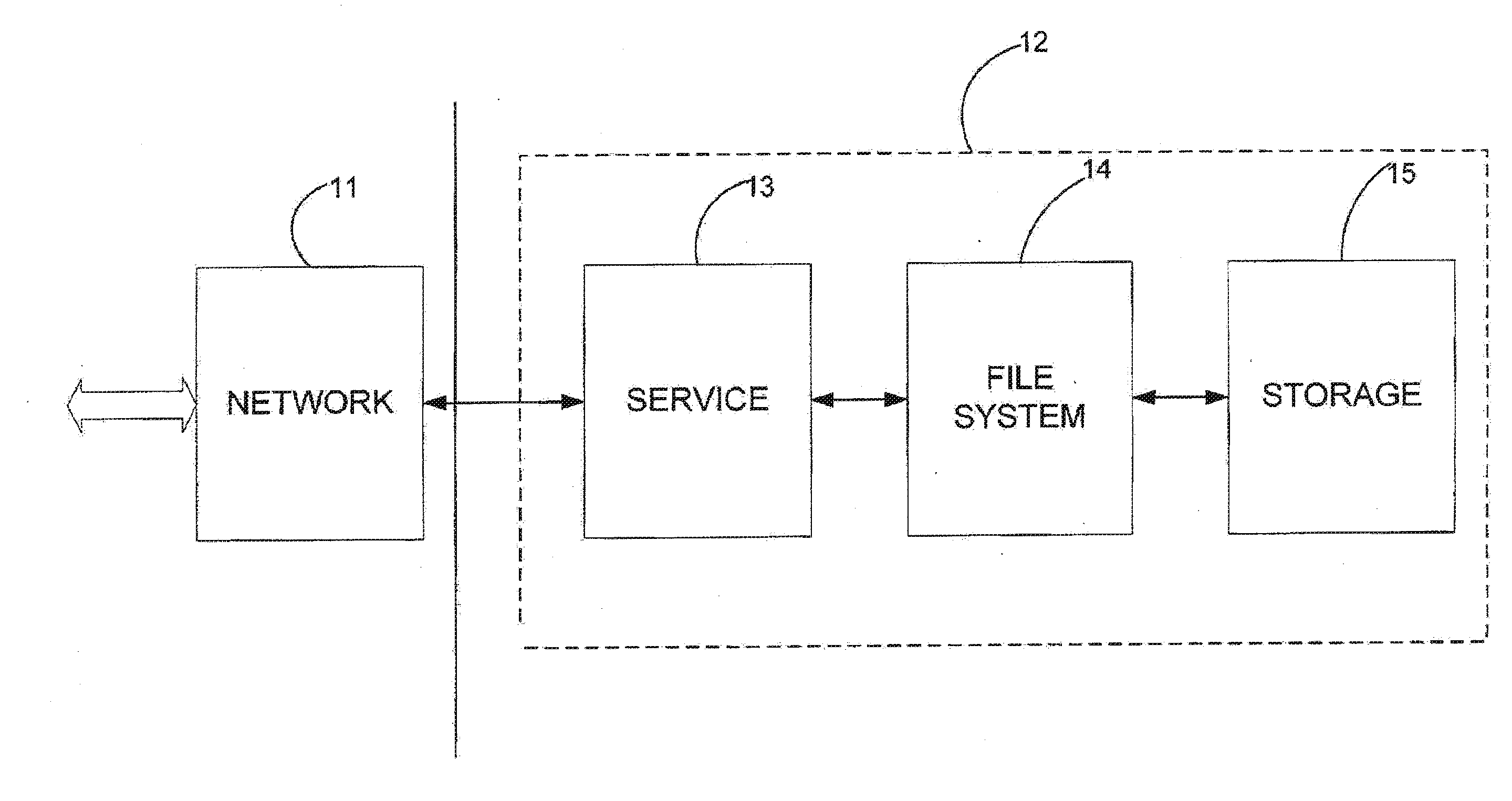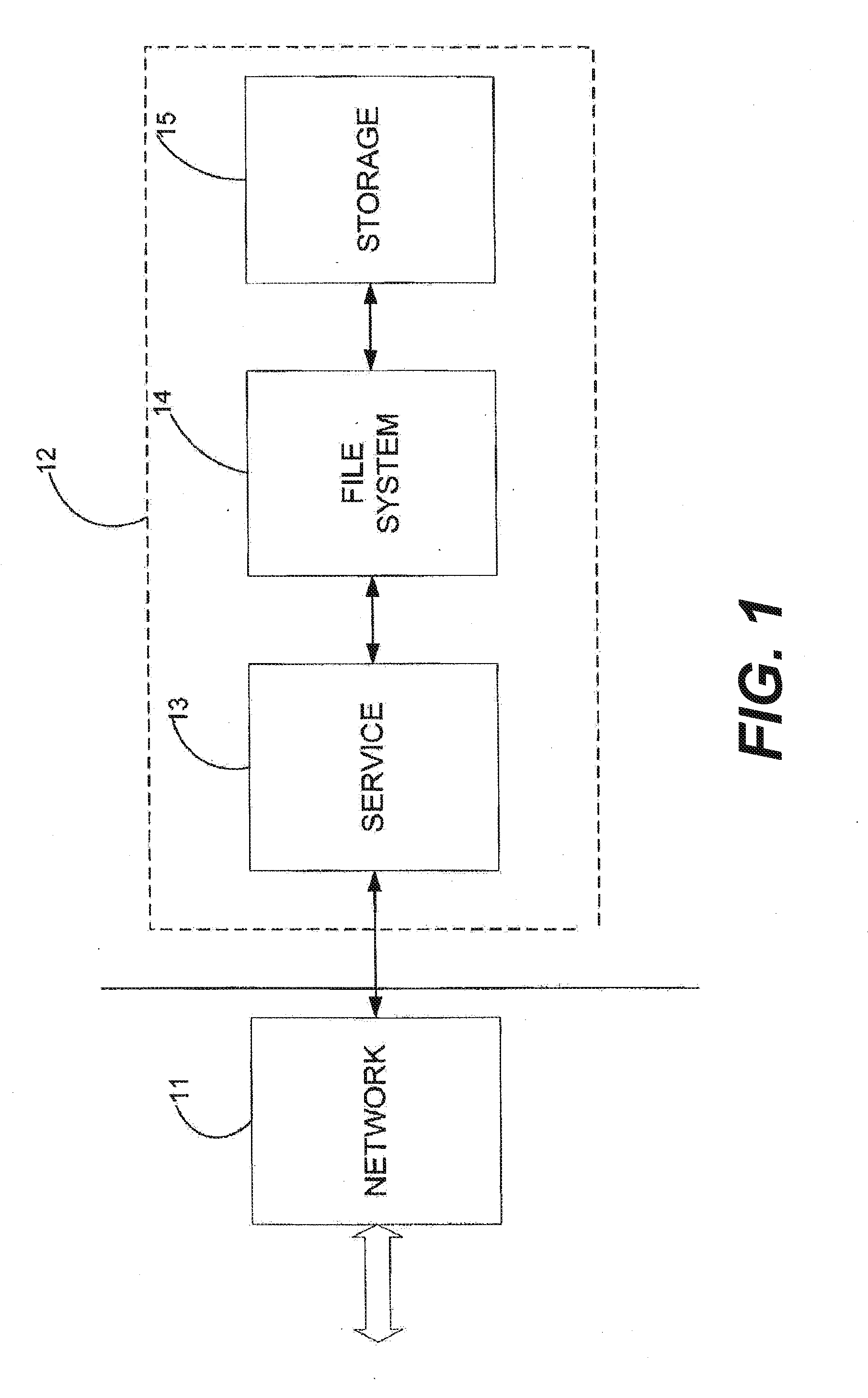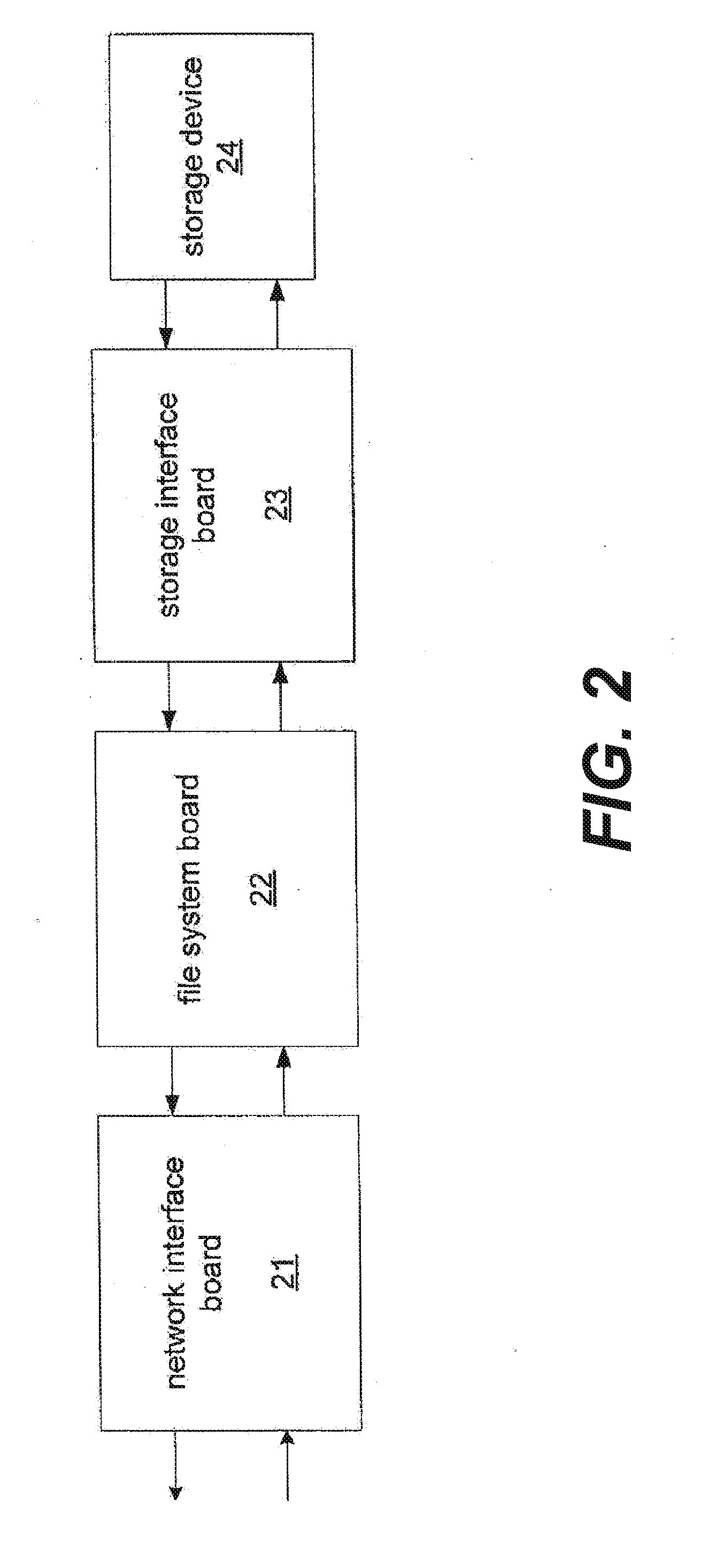System for queue based object cloning
a technology of object cloning and file system, applied in the field of computer file system, can solve the problems of limited number of times a file or clone can be cloned, limited number of clones a file system can support, etc., to achieve the effect of preventing further modifications, increasing performance, and efficiently using system resources
- Summary
- Abstract
- Description
- Claims
- Application Information
AI Technical Summary
Benefits of technology
Problems solved by technology
Method used
Image
Examples
Embodiment Construction
[0054]As used in this description and the accompanying claims, the following terms shall have the meanings indicated, unless the context otherwise requires:
[0055]A “storage device” is a device or system that is used to store data. A storage device may include one or more magnetic or magneto-optical or optical disk drives, solid state storage devices, or magnetic tapes. For convenience, a storage device is sometimes referred to as a “disk” or a “hard disk.” A data storage system may include the same or different types of storage devices having the same or different storage capacities.
[0056]A “RAID controller” is a device or system that combines the storage capacity of several storage devices into a virtual piece of storage space that may be referred to alternatively as a “system drive” (“SD”), a “logical unit” (“LU” or “LUN”), or a “volume.” Typically, an SD is larger than a single storage device, drawing space from several storage devices, and includes redundant information so that ...
PUM
 Login to View More
Login to View More Abstract
Description
Claims
Application Information
 Login to View More
Login to View More - R&D
- Intellectual Property
- Life Sciences
- Materials
- Tech Scout
- Unparalleled Data Quality
- Higher Quality Content
- 60% Fewer Hallucinations
Browse by: Latest US Patents, China's latest patents, Technical Efficacy Thesaurus, Application Domain, Technology Topic, Popular Technical Reports.
© 2025 PatSnap. All rights reserved.Legal|Privacy policy|Modern Slavery Act Transparency Statement|Sitemap|About US| Contact US: help@patsnap.com



